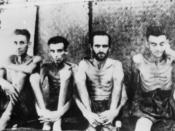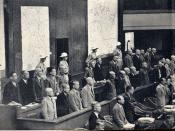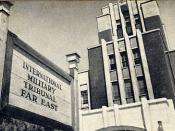Just hours after the Japanese sneak attack on Pearl Harbor on December 7, 1941, 40,000 Japanese troops quickly organized an attack on American soldiers stationed in the Philippines. The surprise attack forced the Americans to retreat into the peninsula of Bataan on Luzon Island. There the poorly equipped U.S. troops followed orders by General Douglas McArthur to hold out until new supplies arrived. On April 9, 1942, with no help on the way and after four months of intense fighting, the Americans, together with their Philippine allies, surrendered. About 60,000 Philippine and 12,000 U.S. troops, coupled with 30,000 civilians were forced into the most brutal series of war crimes ever committed against surrendering American or Philippine soldiers, later became known as the Bataan Death March.
When General Masahuro Homma accepted the surrender he encountered more POWs than he had expected. He wanted to transport the prisoners via truck but there were too many POWs so the only way to transport the troops was to walk.
The Japanese marched approximately 76,000 sick, wounded and malnourished 80 miles out of the area, so as to have a free hand in occupying the rest of the Bataan peninsula. They were forced to walk barefoot over gravel roads, until they reached an old Philippine army camp, Camp O'Donnell. The march, including a 25-mile stretch by train, lasted more than 3 weeks. The estimated number of POWs who arrived at Camp O'Donnell is about 55,000. Based on those numbers roughly 20,000 POWs died during the march; however, the estimates of how many troops were captured and how many died vary because of poor record keeping.
During the trek several factors contributed to the death of the above mentioned 20,000 POWs. The prisoners were murdered from the conditions of the march such as existing wounds,


